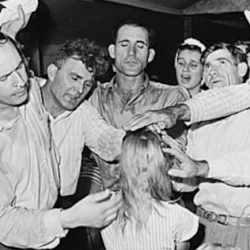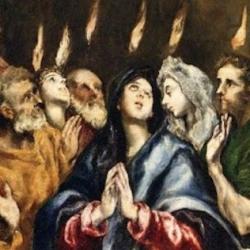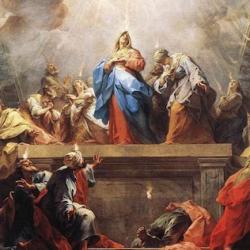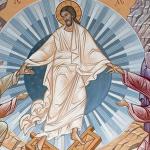Though over a decade old, David Martin’s Pentecotalism: The World Their Parish is still a revelation. Densely textured in both form and matter, it demands, and rewards, slow and careful reading.
This is partly because of the book’s reprise of Martin’s arguments concerning secularization (see his updated theorizing On Secularization), which emphasize the diversity of patterns of secularization. Continental, Iberian secularization is not the same as Anglo-American secularization because of differences between Protestantism and Catholicism and between the church-state settlements. Though large sections of the book summarize the research of other scholars, the argument never drags or loses interest. Martin gets to the heart of the research his summarizes, and leaves quibbling to others.
The book is grounded in rich historical research, for example in Martin demonstration of the genealogical connection between Pentecostalism and Methodist roots (ground traversed also in Martin’s Tongues of Fire). Martin’s sociology is remarkably friendly to theology. He even defends Pentecostal accounts of faith-healing, on the commonsensical assumption that conversion relieves spiritual stresses that have physical effects. It’s not surprising that a lonely person will be physically healed by incorporation into a lively community of Spirit-filled, spirited Christians. Martin has a knack, remarkable for a sociologist, for explaining Pentecostalism in terms Pentecostals could recognize.
One of the specific themes is the way that Pentecostalism works as a cultural force, which eventually has the potential for political effects. Men converted to Pentecostalism give up drinking, gambling, fighting, and all the other displays and markers of machismo. In giving up drinking, they may be saving up to 25% of their income, which can now be devoted to productive uses. They are urged to live productive, honest lives, and they are members of churches that hold them accountable. Against the caricature of charismatics as the wild men of Christendom, Martin emphasizes the discipline of Pentecostal churches (appropriate to churches with roots in Methodist and Holiness movements).
Women like Pentecostalism, not only because of the effect it has on men but because of the opportunities it provides for ministry and even leadership. At a number of points in Martin’s book, I was reminded of Rodney Stark’s description (Rise of Christianity) of the attractiveness of Christianity to first-century Roman women.
At the same time, Pentecostalism has a kind of pragmatic flexibility that gives is an advantage (again like Methodism) over more established, more staid, wealthier churches. It combines strong authoritative, even authoritarian leadership with the egalitarianism of the gifts of the Spirit. Everyone is supposed to contribute, everyone called to be a servant of God and evangelist. It is this flexibility that has allowed Pentecostalism to make rapid inroads into Latin America. Even the base communities of Latin American Catholicism are answerable to the bishops; Martin strikingly characterizes the base communities as socially conservative groups. The hierarchy of the Catholic Church leaves it vulnerable to the Spirit that blows where He wills.
This summary captures Martin’s views on the attractiveness of Pentecostalism to many of the poor, marginal, and outcasts of the world:
“A new name in the spirit is the choice of those whose times and seasonal rotations have been ruptured and who have been disembedded from the ties of place, for example the fiesta or ancestor veneration. Their brothers and sisters are now a supportive community of those born by the spirit and not the biological flesh. Their notion of a people in exodus and en route runs parallel to and fuses with the great trek to the modern city. The result is a realization of the ancient idea of theosis – the human infused with the divine – but the idea has been made more dynamic and energized. . . . [The story] is that tens of millions on the move know themselves to be released from ascribed categories and indelible markers into a dangerous and bewildering open-endedness which has been made meaningful and purposeful by a discipline that offers a destination. You cannot make this trek through the wilderness without a set of disciplines and a sense of a good ‘end’ in view. For safety’s sake the disciplines will err on the side of rigor, and believers will accept new markers of identity in exchange for the old ones, to show to what company of wayfarers they belong. They will also exchange the authority of the elders or patrons for the charismatic leadership of the pastor, who marks out the route and the rules but is in all things else like themselves, speaking their language. . . . On a crowded raft in a turbulent sea the law of survival depends on the exercise of authority. By a parallel paradox the inclusive has to be nurtured in the exclusive and the bounded: the seed of a new fraternity requires the protection of borders distinguishing the church from the world” (168-9).
Martin’s book is not only revealing for what it says about Pentecostalism. It is revealing for the lessons it holds for those who us who are not Pentecostals.














